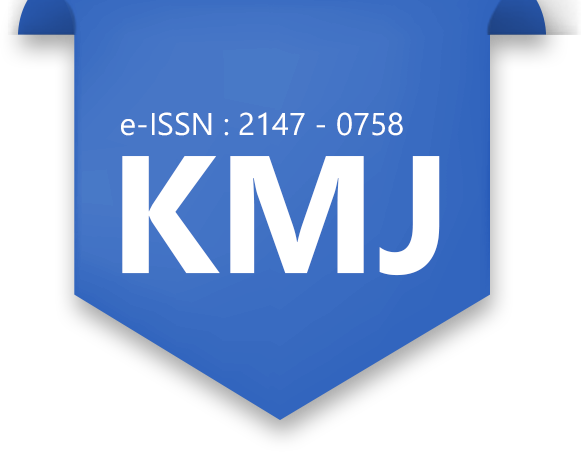
Clinical Outcomes and Imaging Features of Traumatic Brain Injuries in Intensive Care Unit
Yasemin Cebeci1, Hakan Cebeci2, Jale Bengi Çelik11Selcuk University, Department Of Anesthesiology And Reanimation, Konya, Turkey2Selcuk University, Department Of Radiology, Konya, Turkey
INTRODUCTION: To analyse demographic data, aetiological factors and the clinical status of traumatic brain injury (TBI) patients in an intensive care unit, and to investigate relationships between clinical status and imaging findings.
METHODS: Sixty-seven TBI patients who were treated and followed-up in the intensive care unit from January 2010 to February 2016 were enrolled in this study. Patients were divided into groups according to TBI severity, Glasgow outcome score and mortality status. Duration of hospitalisation in the intensive care unit, trauma aetiology, intubation status and duration, mannitol administration and duration, tracheostomy opening, intracranial pathology and surgical data were analysed. Radiologically, epidural, subdural, subarachnoid, parenchymal haemorrhage and diffuse axonal injury (DAI) indices were evaluated.
RESULTS: Sixty-seven (18 female, 49 male) patients with a mean age of 33.8 ± 20.3 years were included. The mean Glasgow coma score of patients upon admission was 6.2 ± 4.3. TBI, Glasgow outcome score and mortality did not differ in terms of age and gender distribution. Subarachnoid haemorrhage was the most common radiological finding (56.7%). DAI was significantly higher in the severe TBI group (p = 0.028) and was found to be a risk factor for severe TBI development (r = 0.276, p = 0.024). Admission Glasgow coma scores were significantly lower in both non-survivor and negative Glasgow outcome score groups (p < 0.001 and p < 0.001, respectively).
DISCUSSION AND CONCLUSION: Various factors affect TBI prognosis. DAI is an independent risk factor for severe TBI. Diffusion weighted imaging should be performed in patients with suspected DAI.
Yoğun Bakım Ünitesinde Travmatik Beyin Hasarının Klinik Sonuçları ve Görüntüleme Özellikleri
Yasemin Cebeci1, Hakan Cebeci2, Jale Bengi Çelik11Selçuk Üniversitesi Tıp Fakültesi, Anesteziyoloji Ve Reanimasyon Ana Bilim Dalı, Konya, Türkiye2Selçuk Üniversitesi Tıp Fakültesi, Radyoloji Ana Bilim Dalı, Konya, Türkiye
GİRİŞ ve AMAÇ: Yoğun bakım ünitesinde bulunan travmatik beyin hasarı (TBH) hastalarının demografik verilerini, etiyolojik faktörlerini, klinik durumunu analiz etmek ve klinik durum ile görüntüleme bulguları arasındaki ilişkileri araştırmak.
YÖNTEM ve GEREÇLER: Ocak 2010dan Şubat 2016ya kadar yoğun bakım ünitesinde tedavi edilen 67 TBH hastası bu çalışmaya dahil edildi. Hastalar TBH şiddeti, Glasgow sonuç skoru ve mortalite durumuna göre gruplara ayrıldı. Yoğun bakımda yatış süresi, travma etiyolojisi, entübasyon durumu ve süresi, mannitol uygulaması ve süresi, intrakraniyal patoloji, trakeotomi ve kraniektomi durumu incelendi. Radyolojik olarak epidural, subdural, subaraknoid, parankimal hemoraji ve diffüz aksonal hasar (DAH) değerlendirildi.
BULGULAR: Çalışmaya ortalama yaşı 33,8 ± 20,3 yıl olan 67 (18 kadın, 49 erkek) hasta dahil edildi. Hastaların başvuru anında ortalama Glasgow koma skoru 6,2 ± 4,3 idi. TBH, Glasgow sonuç skoru ve mortalite yaş ve cinsiyet dağılımı açısından farklılık göstermedi. Subaraknoid kanama en sık görülen radyolojik bulguydu (%56,7). DAH, şiddetli TBH grubunda anlamlı olarak daha yüksekti (p = 0,028) ve şiddetli TBH gelişimi için bir risk faktörü olduğu bulundu (r = 0,276, p = 0,024). Başvuru Glasgow koma skoru hem sağ kalmayan hem de negatif Glasgow sonuç skoru gruplarında anlamlı olarak daha düşüktü (sırasıyla p <0,001 ve p <0,001).
TARTIŞMA ve SONUÇ: TBH prognozunu çeşitli faktörler etkiler. DAH, şiddetli TBH için bağımsız bir risk faktörüdür. DAH şüphesi olan hastalarda difüzyon ağırlıklı görüntüleme yapılmalıdır.
Manuscript Language: English












